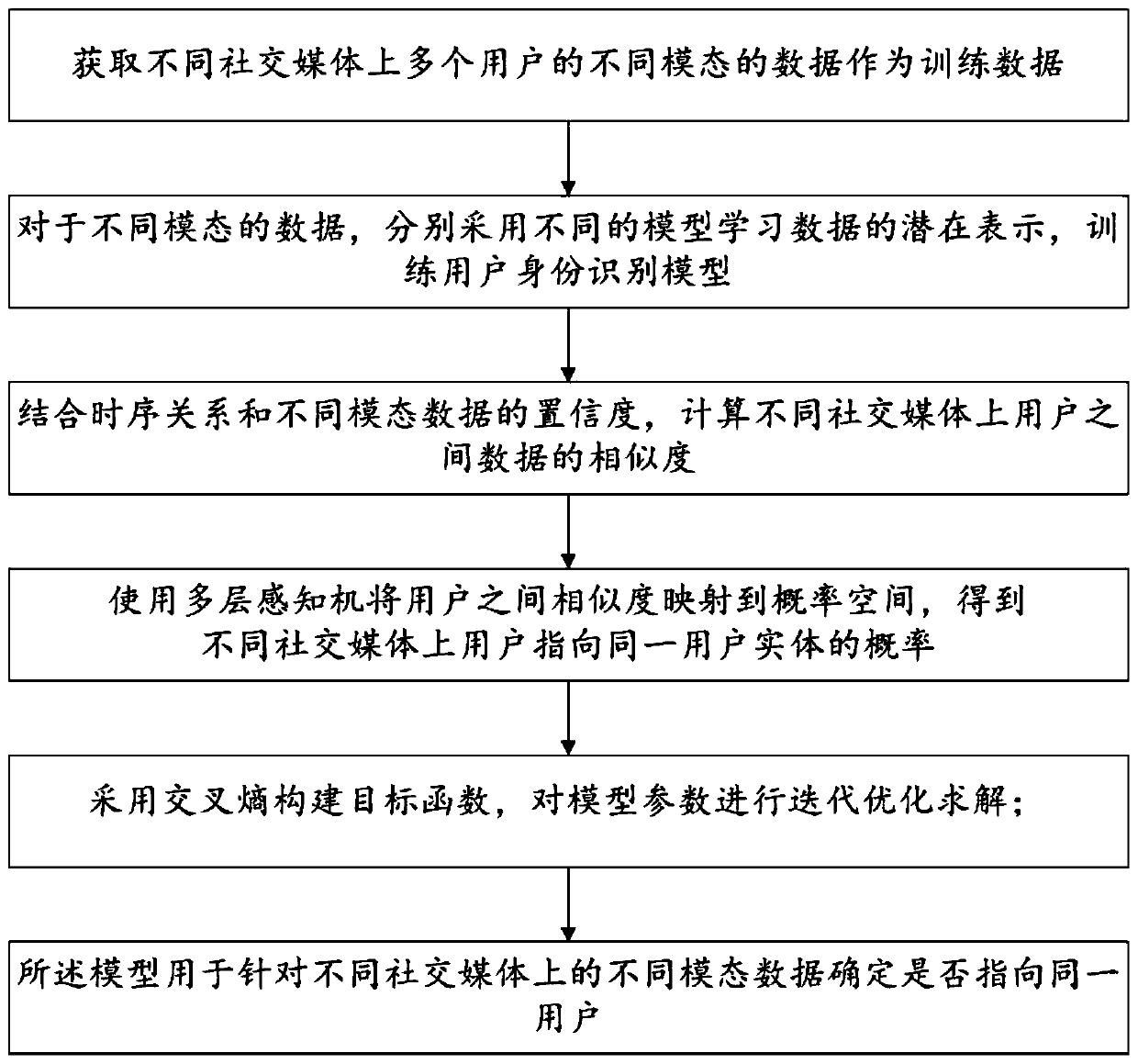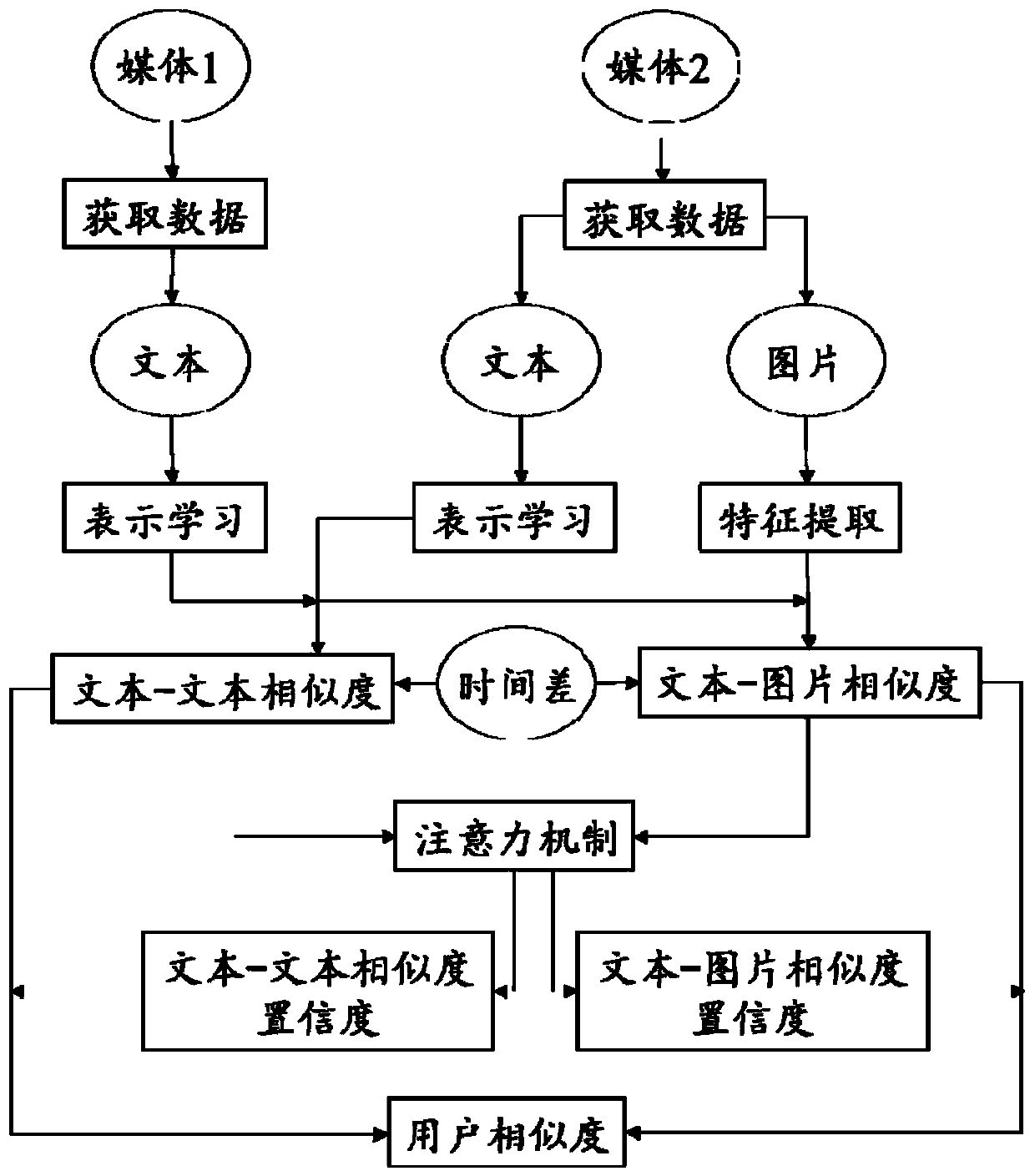Cross-social media user identity recognition method and system based on attention mechanism
A user identification and social media technology, applied in the field of cross-social media user identification based on the attention mechanism, can solve problems such as ignoring generated data and poor model interpretability, achieve good behavior characteristics, good user matching, and improve reliability explanatory effect
- Summary
- Abstract
- Description
- Claims
- Application Information
AI Technical Summary
Problems solved by technology
Method used
Image
Examples
Embodiment 1
[0032] In order to achieve the above purpose, this embodiment realizes cross-social media user identity identification by learning the accurate representation of user multi-source heterogeneous data and combining the internal timing relationship of user-generated data. Since different modalities in user-generated data have different confidence levels in cross-social media user identification, the attention mechanism is introduced to realize the automatic allocation of different modal confidence levels, thereby improving the modeling performance and model accuracy of cross-social media user identification. interpretability. Specifically, the present embodiment provides a cross-social media user identification method based on attention time perception user modeling, comprising the following steps:
[0033] S1: Capture different modal data of users on different social media, and use different models to learn the potential representation of data for different modal data;
[0034]...
Embodiment 2
[0076] The purpose of this embodiment is to provide a cross-social media user identification system.
[0077] In order to achieve the above object, the present embodiment provides a cross-social media user identification system based on attention mechanism, including:
[0078] The data acquisition module captures data of different modalities of users on different social media;
[0079] The data representation module, for data of different modalities, uses different models to learn the potential representation of data;
[0080] The model training module and the user similarity calculation module combine the temporal relationship and the confidence of different modal data to calculate the similarity of data between users on different social media; the probability calculation module uses a multi-layer perceptron to calculate the similarity between users Mapped to the probability space, the probability that users on different social media point to the same user entity; use cross-...
Embodiment 3
[0083] The purpose of this embodiment is to provide an electronic device.
[0084] In order to achieve the above object, this embodiment provides an electronic device, including a memory, a processor, and a computer program stored on the memory and operable on the processor, when the processor executes the program, it realizes:
[0085] For data of different modalities, different models are used to learn the potential representation of the data, and the user identification model is trained:
[0086] Calculate the similarity of data between users on different social media by combining the temporal relationship and the confidence of different modal data;
[0087] Use a multi-layer perceptron to map the similarity between users to a probability space, and obtain the probability that users on different social media point to the same user entity;
[0088] Using cross entropy to construct the objective function, iteratively optimize and solve the model parameters;
[0089] The mod...
PUM
 Login to View More
Login to View More Abstract
Description
Claims
Application Information
 Login to View More
Login to View More - R&D
- Intellectual Property
- Life Sciences
- Materials
- Tech Scout
- Unparalleled Data Quality
- Higher Quality Content
- 60% Fewer Hallucinations
Browse by: Latest US Patents, China's latest patents, Technical Efficacy Thesaurus, Application Domain, Technology Topic, Popular Technical Reports.
© 2025 PatSnap. All rights reserved.Legal|Privacy policy|Modern Slavery Act Transparency Statement|Sitemap|About US| Contact US: help@patsnap.com



